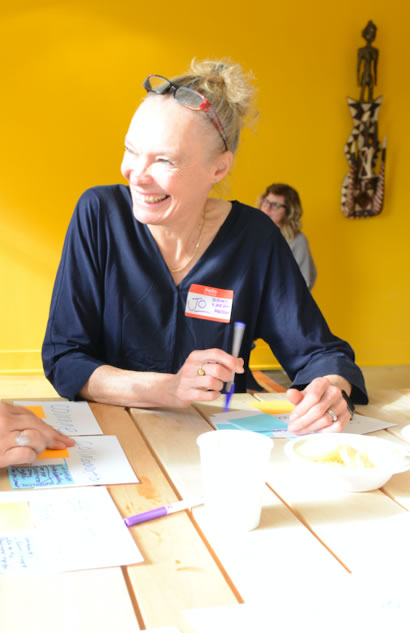
Jo Quinton-Tulloch
National museums outside of London are different. I didn’t fully appreciate this until I came to Bradford.
In London a large percentage of visitors are international tourists, making a once-in-a-lifetime visit to a must-see gallery. Outside of London, museum visitors and their motivations for visiting are quite different. Grappling with the context of a museum and its relationship with its audiences, is key to unlocking its full potential.
Our Museum was established in a serendipitous way; Bradford wasn’t chosen as its location in 1983 because of an exceptionally strong heritage in photography, film or broadcast technologies. There isn’t a particularly strong intellectual connection to ‘place’ or a historical narrative that provides a relationship between the collections and our city. Yet the Museum has undoubtably established its roots. How do we strengthen and nourish them?

Bradford and Chicago: Community Co-Creation Exchange, 20th November 2019, Stony Island Arts Bank. Photo credit: Erik Peterson
As part of our research we visited Chicago, where there is a strong history of activism and of grassroots organisations that have successfully addressed imbalances of power. It was inspiring – and at the same time frustrating. I recognised that these smaller, independent, self-organised groups and organisations were able to achieve radical change, in part because of their flexibility and nimbleness.
At one moment, Faheem, the director of the Floating Museum (an art collective that creates new models, working on site specific projects across the city – the antithesis of our museum) talked about strengths and limitations:
“You’re not going to change the museum – it took hundreds of years to get here, it’s not going to change in one lifespan. You need to understand the limitations that are in place because of the institution. Each organisation/individual has a different type of institution, with its individual limitations. But the limitations have to be on the table with all our hopes and dreams. Be honest about the limitations.”
His point was that in knowing your limitations you can work effectively with them. And even more importantly, be clear about the limitations when embarking on a partnership. Other organisations can be more nimble and flexible; can make decisions and respond more quickly; and operate in ways that we cannot. But we have other strengths. We have relatively secure national funding, we have historically significant collections and high-profile exhibitions, we are part of a Group that brings resource and expertise, we have a national platform that connects us to other national and international platforms, we have our international networks of museums and researchers. We can bring all of this to the work we do, aligning with and complementing the work of other organisations within the rich Bradford cultural ecosystem.
Read responses to Jo's moment
Jo Quinton-Tulloch's bio
I’m the director of the National Science and Media Museum. I’ve always loved science, but following a degree in Biological Sciences, I wasn’t so passionate about doing science research. I was more interested in the implications and applications of science and technology – how and why it is relevant to everyone; how it affects our lives.
After completing a Masters in Science Communication, I realised that museums provide the most exciting ways of engaging the widest number of different people with science and technology. I started my career as an Explainer at the Science Museum in London where I experienced first-hand the power of objects and hands-on, interactive experiences. My career has involved delivering world class galleries and exhibitions, including being part of the team that created and launched the National Maritime Museum Cornwall. I moved to Bradford in 2012, where my focus has been to forge new sustainable partnerships across the district and region which reposition the Museum as a centre of excellence in STEM learning. And I’ve been inspired by Bradford and the opportunities that come from living and working in such a dynamic and vibrant place.
It is essential that we provide opportunities to inspire the next generation of scientists and technologists, so that we continue to develop our science base and knowledge. I don’t think everyone needs to become a scientist – although we definitely need to diversify our science workforce. But I do believe it is important that everyone has confidence around science and that science is not seen as elitist. Our world is driven by science and technology, and we need to be able to question how, where and why we use it.



